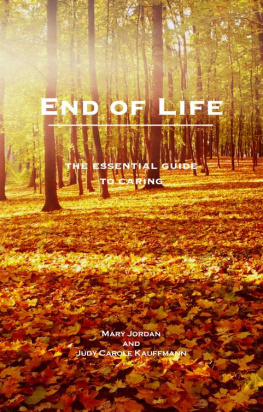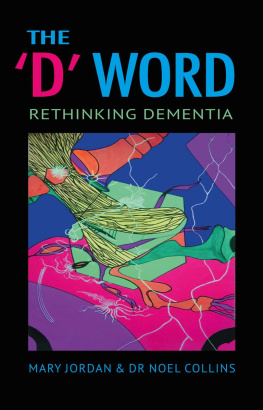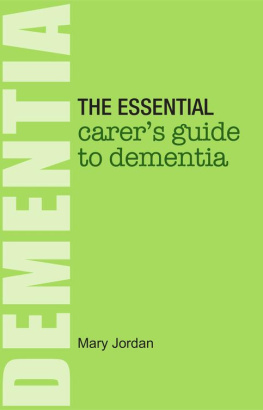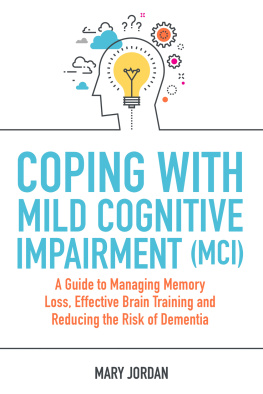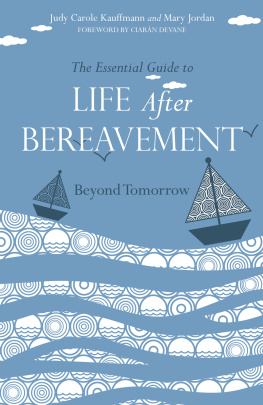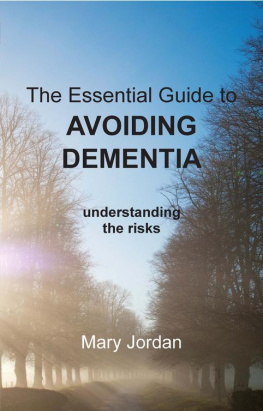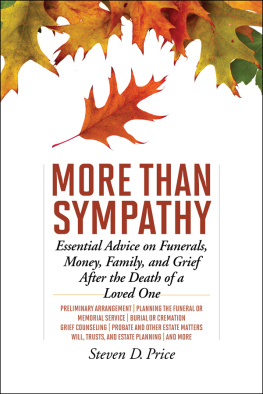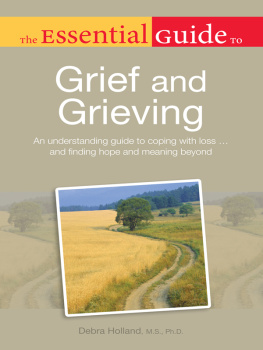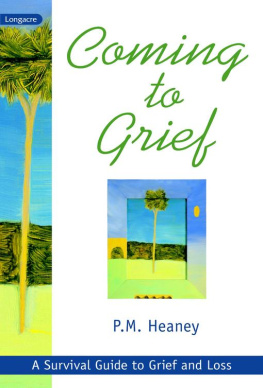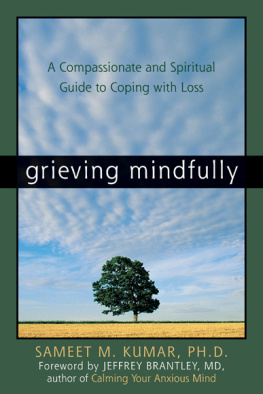The case stories in this book have come from many sources and not everyone wished to have their names mentioned. We would like to thank all those who have generously shared their stories and their areas of expertise with us. They have no idea how much it is appreciated.
We would like to thank: Sharon Boylett MSc, PGDip, NDN, DipN, RGN for the information and advice she gave regarding Primary Care and end of life; Avril Luchesa and Dave Sewrey for their immense help with the chapter on funerals; Erica Arnold, Pam Augier, Nancy Bank, Sara Clayton, Jean Chick from Bupa, Paula Doyle who gave us the idea of the leaf, Bryn Edwards, Tracey Farrington, Dawn Fiske (ELManagements end-of-life coach), Ariella Flusser, Karina Fraser, Dr Shirley Holton, Rauf Jordan, Linda McEnhill (Co-ordinator of The National Network for the Palliative Care of People with Learning Disabilities), Sarah Mould from JPA, Patricia Palmer, The Regard Partnership who allowed the team in Surrey to tell Jonathans story, and of course Ciarn Devane who so kindly wrote our foreword.
Our thanks must also go to Georgina Bentliff, our publisher, for her help and advice.
Presenting a guide to managing the end of life is always valuable, but perhaps never more so than now. On the positive side, much has been achieved over the years, building on work by the pioneers of end- of-life care. Pioneers from all walks of life have shaped how we look after those who are dying. Douglas Macmillan a civil servant, founded what is now Macmillan Cancer Support; Cecily Saunders, a social worker before she became a physician, effectively created the modern British independent hospice movement; and Thelma Bates, a radiation oncologist, inspired the first NHS palliative care team. They and many others ensured that palliative and supportive care are accepted as fundamental to patient well-being. We and our loved ones benefit from many great examples of the best of care and support.
But we also have some challenges. People are still saying that care in the last months of life feels fragmented and confusing and they dont know how to reach the help that they need. They report increasing physical distress, financial hardship, fear and isolation. They need consistent information and help from professionals to manage complex symptoms in hospital and at home, and they need support to make difficult choices about treatment and care. End-of-life care must mean care for the whole person, helping that person live with their condition, retaining their autonomy as long as possible. The challenges of information, communication and coordination will increase. Social care and health care must integrate; support at home and in the community must be as effective as that in hospital; planning during the day must ensure problems out of hours are anticipated.
There is much wisdom in the pages of this book. It offers practical advice in a caring way and it is hard to say any of it is more or less important than the rest. But it is important that those of us who want to improve end-of-life care understand some of the critical things which can have a disproportionately significant impact on whether someone has a good death, or not.
First, we must understand that treatment and planning for dying are not mutually exclusive. Todays patients may continue treatment until weeks before death with no one point when survivorship ends and dying begins. Accepting a patient may die is not a failure of treatment . We must support professionals to ask themselves the surprise question, that is: Would you be surprised if your patient was not alive in 6-12 months? And if the professional would not be surprised, then it is time to support the patient to begin their thinking and planning for the end of life. It is what the patient wants and needs which is important, and beginning to think through how they want to live as they approach death is, we know, hugely important. Those of us who care for people as they approach death must help make that conversation possible so that the care articulated in the Gold Standards Framework is provided.
The second thing we have to achieve is to share the specialist knowledge of palliative care teams more broadly. Working with generalist nursing staff and carers, specialists can help plan for problems that might arise, and put in place the skills and knowledge, so that when problems arise they are dealt with at home or in the care home, and do not need a patient to be moved to a specialist hospice, hospital or unit. The carers who are present know what to do and have the confidence to address even quite complex matters. A related issue is that problems do not arise conveniently between nine and five, Monday to Friday. What I would like to see is that the Out of Hours Toolkit is widely used so that again plans are in place to avoid problems and crises.
My third and final priority is to do with language, even culture. While those of us reading this book will cope with the language of dying , others will not. The belief that treatment is active or palliative (but never both) and that terminal care is not about living is widespread. The tragedy is that some who could live well are not helped to do so because those around them in the community dont do dying and their own fears prevent them helping those who are indeed approaching the end of their lives. A better future is one in which we as a society understand living with even advanced conditions, and understand what we can do to help people approaching the end of their lives.
My hope for the future is that every person with a progressive, incurable condition should expect to receive the continuity of treatment and care they want and need with as little distress as possible, so they can face death without unnecessary fear, and continue to live their lives as long and as well as possible. The greatest asset we have, of course, is often those around us. People who love us, care for us and want the best for us. We cannot, however, necessarily expect them to be experts, or intuitively knowledgeable, any more than we ourselves can know how to do end of life well without some thought and learning.

